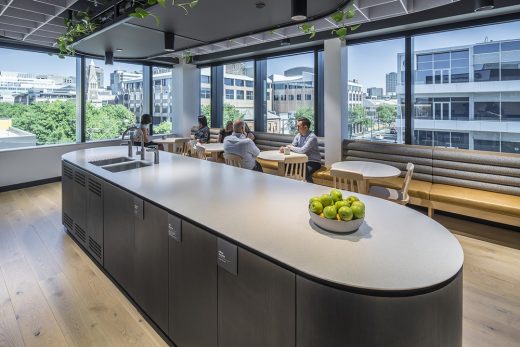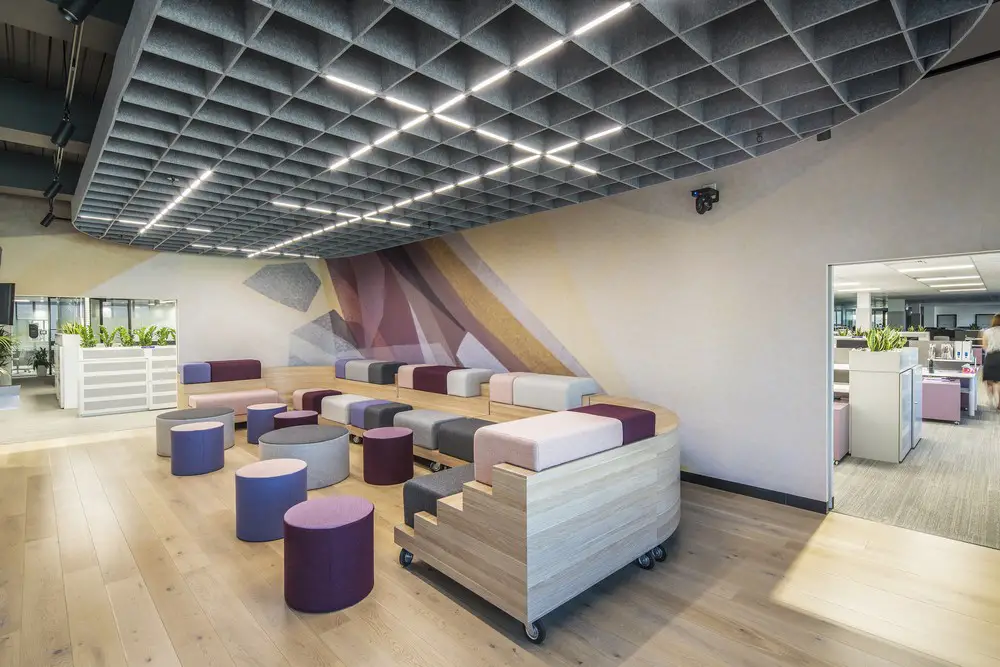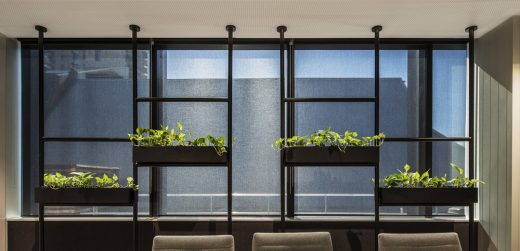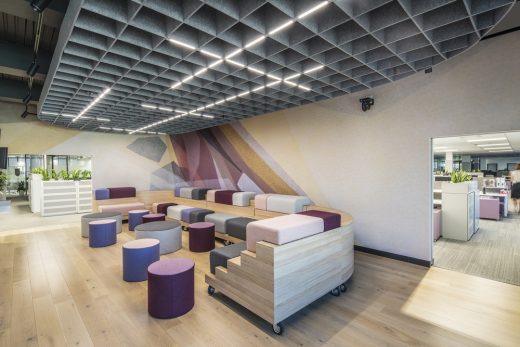Biophilic Design Advice, Architects Coronavirus Impact, COVID-19 Office Tips 2020, WFH health Guide
Biophilic Design Benefits
How COVID-19 affeted mental health
26 Aug 2020
Getting back to nature
Pressure on the environment is increasing and more than ever, there’s a need to dissipate that stress and its effect on our health. It’s the perfect time to realise the benefits of Biophilic Design…
It’s a winter’s morning and you’re walking in the park. It’s sunny but cool, the faintest susurration of wind in the trees. It rained overnight, the scents of grass and damp earth strong in the air, and you stop walking for a minute to breathe deeply. In that moment you’re suddenly in touch with everything around you – from the colours of the leaves to the distant bark of a dog to the chill in your lungs as you draw deep.
And somewhere inside you, something…unclenches.
You know the feeling, right? That powerful connection to your surroundings that you only get from the outdoors? If you don’t recognise it, you should probably leave the house more often.
But then, that’s rather the problem right now. Thanks to the coronavirus outbreak, we’ve spent so much of the past few months indoors that we’re forgetting what the natural world looks like.
In April and May this year– at the height of COVID-related restrictions, when people were forced to remain indoors – mental health organisation Beyond Blue recorded an uptick in calls of 60 per cent or more. With Victoria’s return to lockdown in recent weeks, the number of helpline calls has doubled, with fatigue, exhaustion and general distress the trigger.
But even in a relatively normal social climate, where we aren’t driven to the edge by pandemics, studies suggest we spend 90 per cent of our time indoors. Disease or no disease, we still suffer the consequences of everything from mental overstimulation to compounding micro-stresses slowly grinding us down. Indeed, one 2010 study showed that almost half of those surveyed operate on autopilot, simply disengaging to get through the day, with deleterious consequences to mental health. Imagine how that will have increased with the pressures of the last decade…
Moments spent in nature allow us to be present in the moment in a way regular urban living does not. Finding ourselves hyperaware of our surroundings and their beauty has a relaxing effect; it’s the cornerstone of the idea of Mindfulness that has risen in recognition in recent years. The trick, then, would seem to be translating that feeling of connection to how we live indoors, so reaping the mental and physical health benefits.
And that’s why we look to biophilic design.
To simplify its definition somewhat, biophilic design mimics the experience of nature within an ostensibly unnatural space. It’s bringing the outside in. This is achieved by a whole host of practical design measures, from sensory cues that recall the natural world (employing sights, sounds and even smells that we relate to the great outdoors) to more subtle approaches such as the use of contours, patterns and textures that recall less structured, angled and ordered surroundings.
Use of natural materials in the creation of these organic shapes adds another element, while increased air and light increase the peace. One principal of the technique is to introduce mystery to a building, a sense that a space should be explored in order for us to appreciate it fully.
Essentially, we are encouraged to switch off our autopilot.
“Biophilia is invaluable in weaving nature into the design process, at every level,” says Yaara Plaves, head of the National Sustainability Forum (NSF) at Hames Sharley. “From building façade to carpet selection, from urban design to graphics, all aspects of design have opportunities to learn from nature as a building block, as part of a regenerative design strategy.”
Indeed, even before coronavirus took us in its grip, designers were actively exploring biophilic design for its positive effect on emotional wellbeing. Not only that, the tenets of the practice make good sense in terms of sustainability, helps improve employee’s productivity, reduces the amount of sick leave taken per year and heightens the desire to be present.
“Biophilia is socially sustainable because it improves physical and mental health,” says Yaara. “It’s environmentally sustainable as it increases opportunities for biodiversity and can help reduce carbon emissions, using plants and natural materials.”
Biophilic design not only helps future-proof spaces by making them more healthy in the event of future lockdowns, it may even assist in limiting further outbreaks. It’s just part of a rethink about how we interact as a species with the planet, with each other, and with the spaces we occupy, says Yaara.
“Keeping nature rich, diverse, and flourishing is integral to our life’s support system. The better we manage nature, the better we manage human health.
“The health of people and the health of the planet are intertwined, and both should thrive in equal measure.”
Comments on this Biophilic design benefits article are welcome.
+++
Biophilic Buildings
Biophilic Building Designs
Merging architecture with nature in biophilic design
Primary school of the future: biophilic building
Biophilic design at Heriot Watt campus Dubai
Milan biophilic office of the future
MITOSIS Biophilic Regenerative Ecosystem
Biophilic Office Project at BRE, Watford
+++
Hames Sharley Architecture in Australia
Australia building designs by Hames Sharley Architecture on e-architect:
Tonkin Consulting in Adelaide, South Australia

photograph : Peter Barnes
Essence Apartment Building in Perth, Western Australia
Australis at Rossmoyne Waters, Perth, Western Australia
Aurecon Darwin Office Fit-out Northern Territory
+++
Hames Sharley Articles
Forrest Chase Perth Shopping Centre by Hames Sharley Architecture, Urban & Interior Design
RMJM Database for Quarantined Architects
Coronavirus impact on the property market
Comments / photos for the Biophilic design benefits – How COVID-19 changed our mental health page welcome






